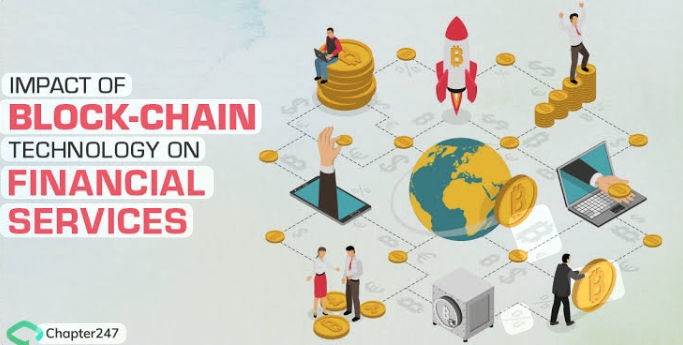
Blockchain technology has emerged as a disruptive force in various industries, with finance being one of the most affected sectors. By enabling secure, transparent, and decentralized transactions, blockchain has the potential to transform traditional financial systems and create new opportunities for innovation. In this blog, we will explore how blockchain is impacting the financial sector, its benefits, challenges, and future prospects.
Understanding Blockchain Technology
Blockchain is a distributed ledger technology that records transactions across a network of computers. Unlike traditional databases, blockchain is decentralized, meaning no single entity controls the system. Each transaction is securely encrypted, time-stamped, and added to a “block,” which is then linked to the previous block to form a “chain.” This structure ensures data integrity and prevents unauthorized alterations.
Key Features of Blockchain:
- Decentralization: Transactions are validated by a network of nodes, eliminating the need for intermediaries.
- Transparency: All participants in the network can view transaction history, ensuring accountability.
-
Security: Advanced cryptographic techniques protect data and prevent fraud.
Transforming Financial Systems
Blockchain technology is reshaping finance in multiple ways, from payments and lending to asset management and regulatory compliance. Below are some key areas of impact:
1. Payments and Remittances
Traditional cross-border payments often involve multiple intermediaries, leading to high fees and delays. Blockchain simplifies this process by enabling peer-to-peer transactions in real-time. Cryptocurrencies like Bitcoin and Ethereum are prime examples of blockchain-based payment systems that reduce costs and improve efficiency.
Benefits:
- Lower transaction fees
- Faster processing times
- Increased accessibility for the unbanked population
2. Decentralized Finance (DeFi)
DeFi is a blockchain-based financial ecosystem that operates without traditional intermediaries like banks. Using smart contracts, DeFi platforms provide services such as lending, borrowing, and trading directly to users. Popular platforms like Uniswap, Aave, and Compound have demonstrated the potential of DeFi to democratize finance.
Key Features:
- Automated processes through smart contracts
- Higher yields for savers and investors
- Global accessibility
3. Asset Tokenization
Blockchain enables the tokenization of physical and digital assets, allowing them to be divided into smaller units (tokens) and traded on decentralized platforms. This innovation has opened up investment opportunities for a wider audience.
Applications:
- Real estate tokenization for fractional ownership
- Tokenized stocks and commodities
- Non-fungible tokens (NFTs) for digital art and collectibles
4. Fraud Prevention and Transparency
Blockchain’s immutable ledger is an effective tool for reducing fraud in financial systems. By providing a transparent and tamper-proof record of transactions, it enhances trust between parties.
Examples:
- Anti-money laundering (AML) compliancy
- Secure identity verification
- Supply chain finance with traceable transactions
5. Central Bank Digital Currencies (CBDCs)
Governments and central banks are exploring blockchain to create digital versions of their currencies. CBDCs combine the benefits of blockchain technology with the stability of traditional fiat currencies.
Advantages:
- Faster and cheaper monetary transactions
- Enhanced monetary policy implementation
- Reduced reliance on physical cash
- Benefits of Blockchain in Finance
- The adoption of blockchain offers several advantages:
-
1. Cost Reduction: By eliminating intermediaries, blockchain reduces transaction and operational costs.
- 2. Efficiency: Real-time settlement of transactions minimizes delays.
- 3. Security: Cryptographic protection enhances the security of financial data.
- 4. Inclusivity: Blockchain-based platforms provide financial services to underbanked populations.
- 5. Transparency: Immutable records ensure accountability and reduce fraud.
Challenges and Limitations
Despite its transformative potential, blockchain faces several challenges:
1. Scalability: Current blockchain networks struggle with high transaction volumes.
2. Regulatory Uncertainty: Governments are still working to develop regulations for blockchain applications.
3. Energy Consumption: Blockchain’s reliance on consensus mechanisms like proof of work (PoW) can be energy-intensive.
4. Integration: Integrating blockchain with existing financial systems is complex and costly.
5. User Education: Many users lack the technical knowledge required to adopt blockchain solutions.
The Future of Blockchain in Finance
The future of blockchain in finance is promising, with several trends indicating continued growth and innovation:
1. Interoperability: Efforts to connect different blockchain networks will enhance usability and efficiency.
2. Green Blockchain Solutions: Transitioning to energy-efficient consensus mechanisms like proof of stake (PoS) will address environmental concerns.
3. Increased Adoption: As regulations become clearer, more financial institutions will adopt blockchain technology.
4. Smart Contracts: Advanced smart contracts will enable more complex financial applications.
5. Global Financial Inclusion: Blockchain will continue to bridge gaps in access to financial services.
Conclusion
Blockchain is revolutionizing the financial sector by introducing efficiency, security, and transparency. While challenges remain, the potential benefits far outweigh the obstacles. As technology advances and adoption increases, blockchain is set to become a cornerstone of modern finance, transforming how we conduct transactions, manage assets, and interact with financial systems.
The blog titled “The Imp
act of Blockchain on Finance” has been drafted. Let me know if you need any modifications, additional details, or further elaboration on specific points!
Leave a Reply